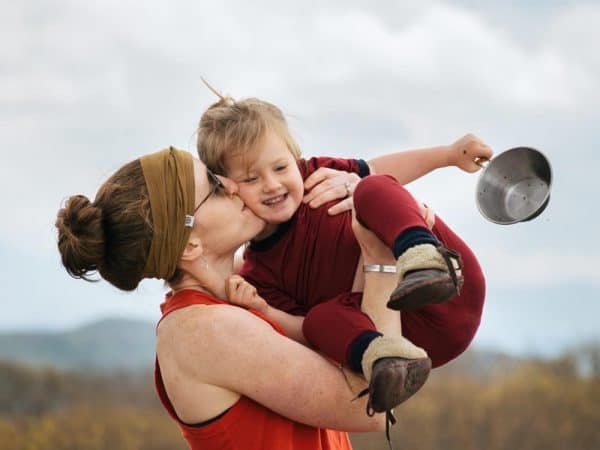Hearts in the Wild Project
Run Wild My Child is hosting a fundraiser and awareness campaign we’re calling “Hearts in the Wild” for children born with congenital heart defects (“CHD”). During the month of February (“Heart Month”), we are asking families to get outside and find heart-shaped objects in nature. Post them to your social media account and help us raise awareness for CHD and funds for designated nonprofits that support heart families and CHD research.
What are CHDs?
Congenital heart defects are structural abnormalities in the heart and/or its vessels that form prior to birth, oftentimes soon after conception, before mothers even know they are pregnant. When trying to understand CHDs it’s helpful to remember how the cardiovascular system, including the heart, is meant to function. As per heart.org:
A normal heart has valves, arteries, and chambers that circulate blood in a recurring pattern: body to heart, heart to lungs, lungs to heart and then heart out to the body. When all the chambers and valves work correctly, blood is pumped through the heart, to the lungs for oxygen, back to the heart and then throughout the body to deliver that oxygen. When valves, chambers, arteries and veins are malformed, this circulation pattern can be impaired.
Congenital heart defects range in severity from simple problems, such as “holes” between chambers of the heart, to very severe malformations, such as the complete absence of one or more chambers or valves.
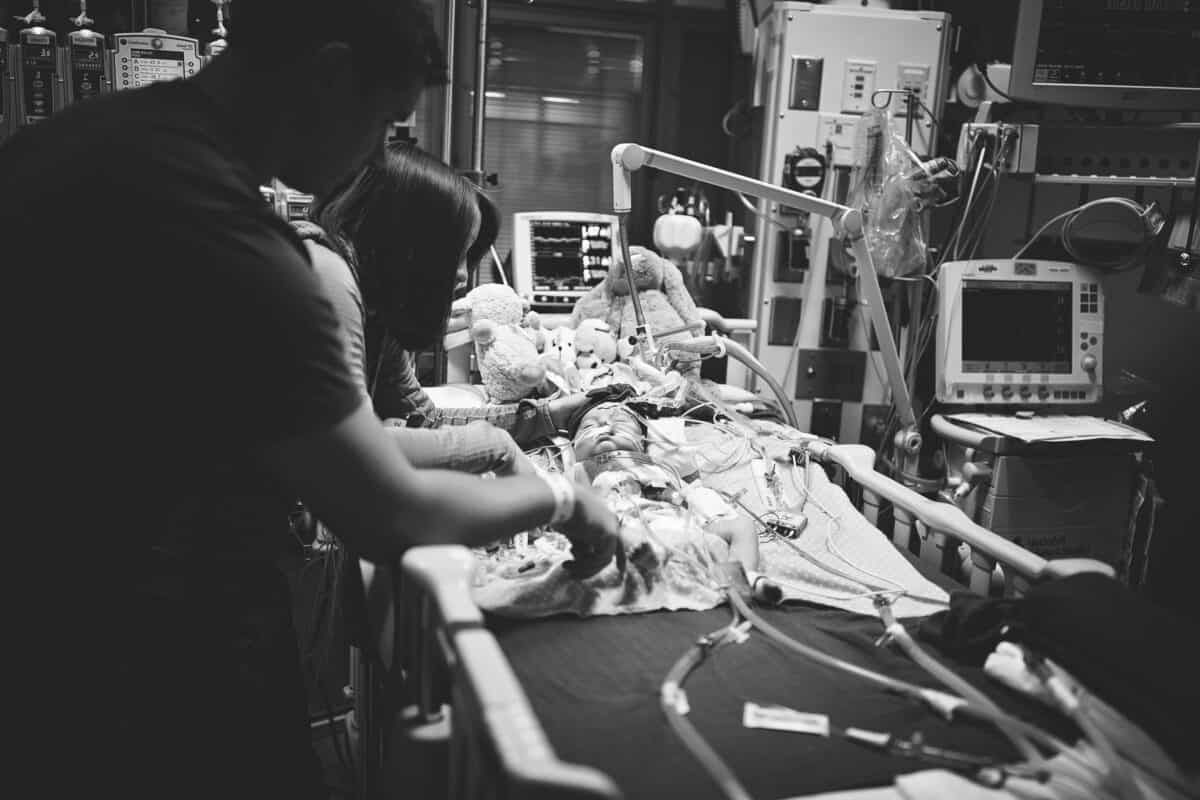
Children with critical CHDs often require open heart surgeries to survive, but these surgeries are not considered a cure.
CHDs are the most common birth defect
1% of all babies are born with diagnosable congenital heart defect(s)–making CHDs the most common birth defect. The range in severity of defects directly impacts the child’s prognosis. While most children born with CHD live into adulthood, 15% do not. And 25% of all children born with CHD require cardiac intervention to survive–whether that be open heart surgeries, interventional catheterizations, or a combination of both.
While our understanding and treatment of CHDs has come a long way in recent years, to quote my child’s open heart surgeon, “there’s just still so much we don’t know.” There are a few known genes linked to CHD, but most defects are of unknown origin seemingly without cause. And while there may be small subsets of people who carry higher risks of having a child with CHD, anyone can have a child with CHD.
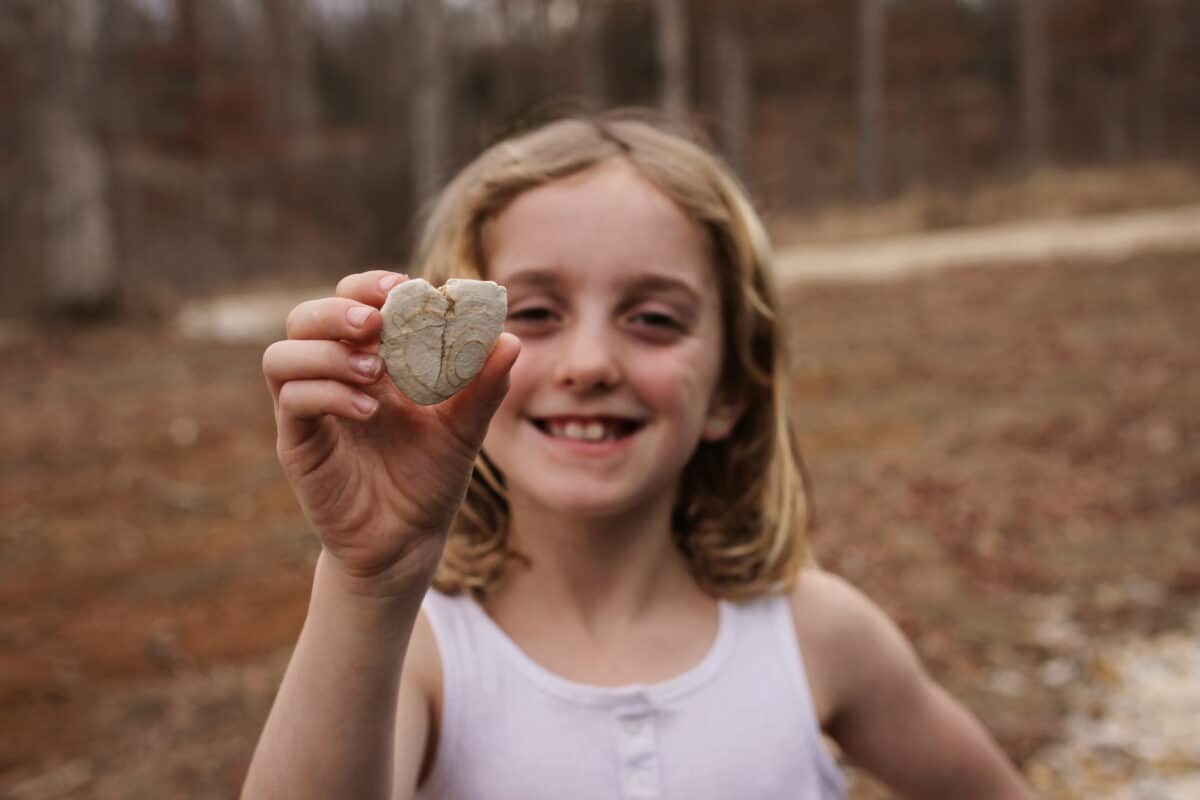
Raising awareness for CHDs
One cannot underestimate the importance of expectant parents’ awareness of CHDs. Many CHDs, especially critical ones, are now diagnosed in utero–but many go undetected. Sometimes I worry that they may go undetected because expecting parents don’t know what to ask their providers about. Most pregnant individuals undergo anatomy scans, but many don’t realize these scans are much more important than finding out the biological sex of their child. Oftentimes CHDs can be detected on anatomy scans, even at 16 weeks gestation.
Questions expectant parents may want to ask during anatomy scans include:
- Does the child have a four-chambered heart?
- Are the large vessels/outflow tracts part of your scan?
- If so, are they connected normally?
- Is the heart pumping normally, including rate and rhythm?
Answering these questions should allow you to either rule out critical heart defects or prepare for any abnormalities found.
Other than encouraging your pregnant friends to inquire about their baby’s heart during anatomy scans, what can you do to raise awareness for CHD?
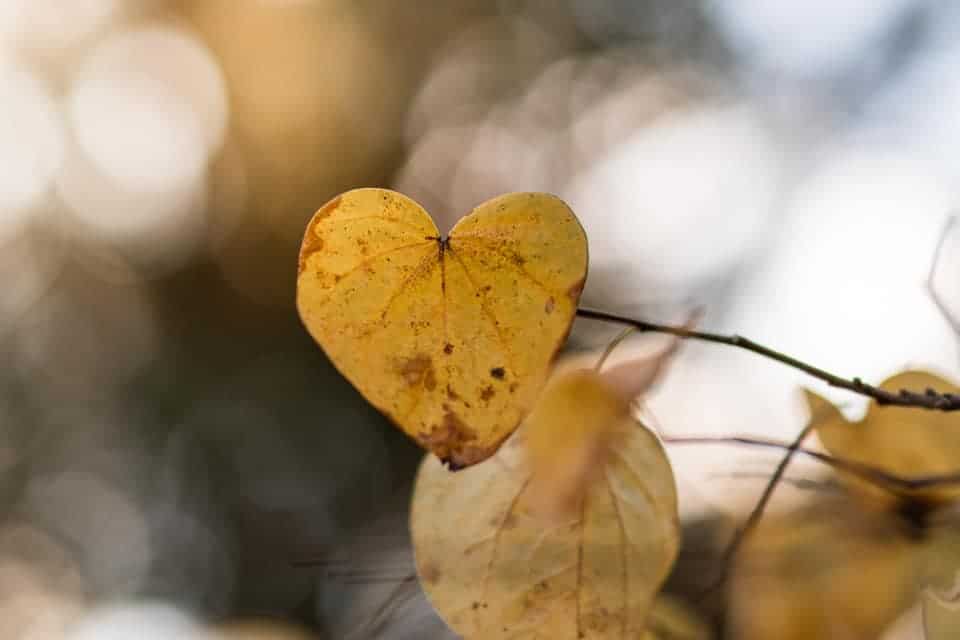
Help us raise awareness by finding nature Hearts in the Wild!
Finding hearts in the wild
Run Wild My Child is hosting a fundraiser and awareness campaign for children born with congenital heart defects during “Heart Month.” We’re asking families to get outside together and look for heart-shaped objects in nature. Maybe that’s a heart-shaped rock, leaf, chunk of ice, or crack in the sidewalk. Heart-shaped objects are all around us, we only need to look! We hope this activity will not only inspire you to explore outdoors with your kids this chilly month but be extra aware and appreciative of the nature around you and your family.
When you find a heart-shaped object, please post it on social media and tag us! We also hope you’ll consider making a donation to a heart charity (we have some suggestions below) or host your own fundraiser to raise funds and awareness. We’ll show you how easy it is below!
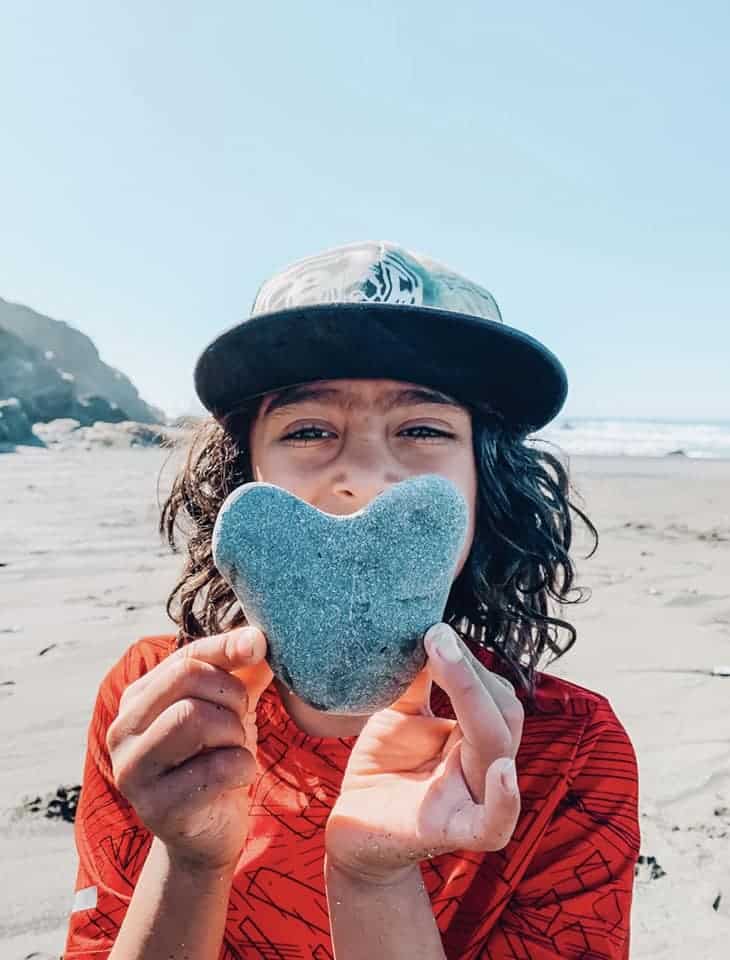
How to participate in the Heart in the Wild project:
- Get outside and explore with your family!
- Look for heart-shaped objects, heart-shaped holes, heart-shaped shadows, etc. (get creative, anything heart-shaped counts!)
- Take a photo and post it to your Instagram feed or story.
- Tag @runwild.mychild and use the hashtag #heartsinthewild. We’ll be sure to reshare!
- Please consider making a donation (even if it’s just $1) for every heart found or photo posted. We’ll do the same!
- Help spread the word by adding a fundraiser for a heart charity* to your post! It’s super easy to do (steps below).
*We’re supporting @BrightforBrett and @MightyOakesHeartFoundation, but you can choose any CHD research or heart-related non-profit of your choosing. Additional information on the charitable organizations we chose to support is below.
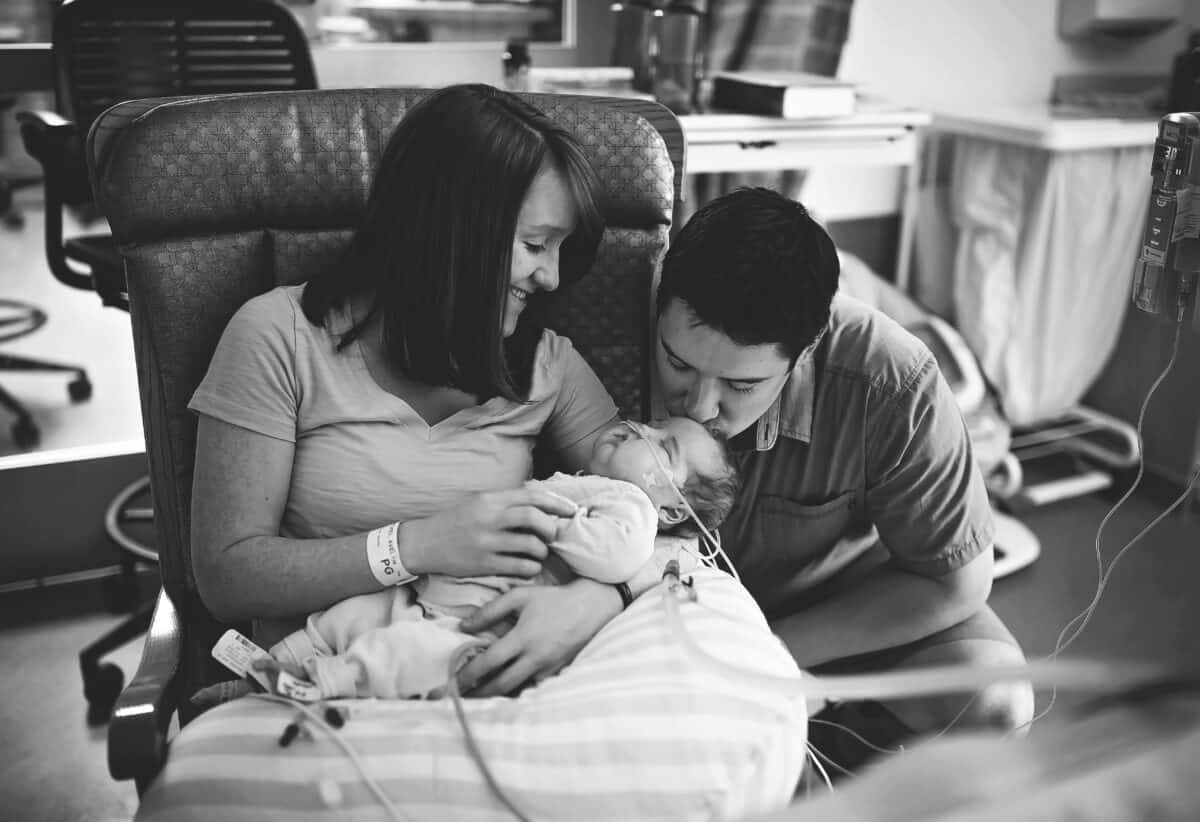
Creative Team member Somer Pickel here to tell you about my darling little girl Avelyn Marie.
Avelyn’s story
We found out before Avelyn was born that she had critical heart defects (CHDs), name tetralogy of fallot (ToF), pulmonary atresia (PA), and major aortopulmonary collateral arteries (MAPCAs). Given the severity of her diagnosis, we picked up our lives and relocated 4+ hours from home to a city with a renowned children’s hospital in preparation for her birth. We were willing to do anything to provide our child a shot at life and had hope that with multiple open heart surgeries, we’d see her grow into adulthood.
In December of 2015, she was pulled from my womb limp and gray. Even so, she fought to announce her presence. To me, her soft wail was her asserting that she too was taking up the fight for survival. She would fight until her last breath 18 months later.
Our daughter endured horrors alongside miracles. She experienced unimaginable compounding complications, yet to know her spirit—you’d never know it. Even after 4+ months of intubation and 4 open heart surgeries, she was the sweetest most affectionate soul. She inspired those around her to be better and do better. Avie gave us strength to accomplish what we all believed impossible.
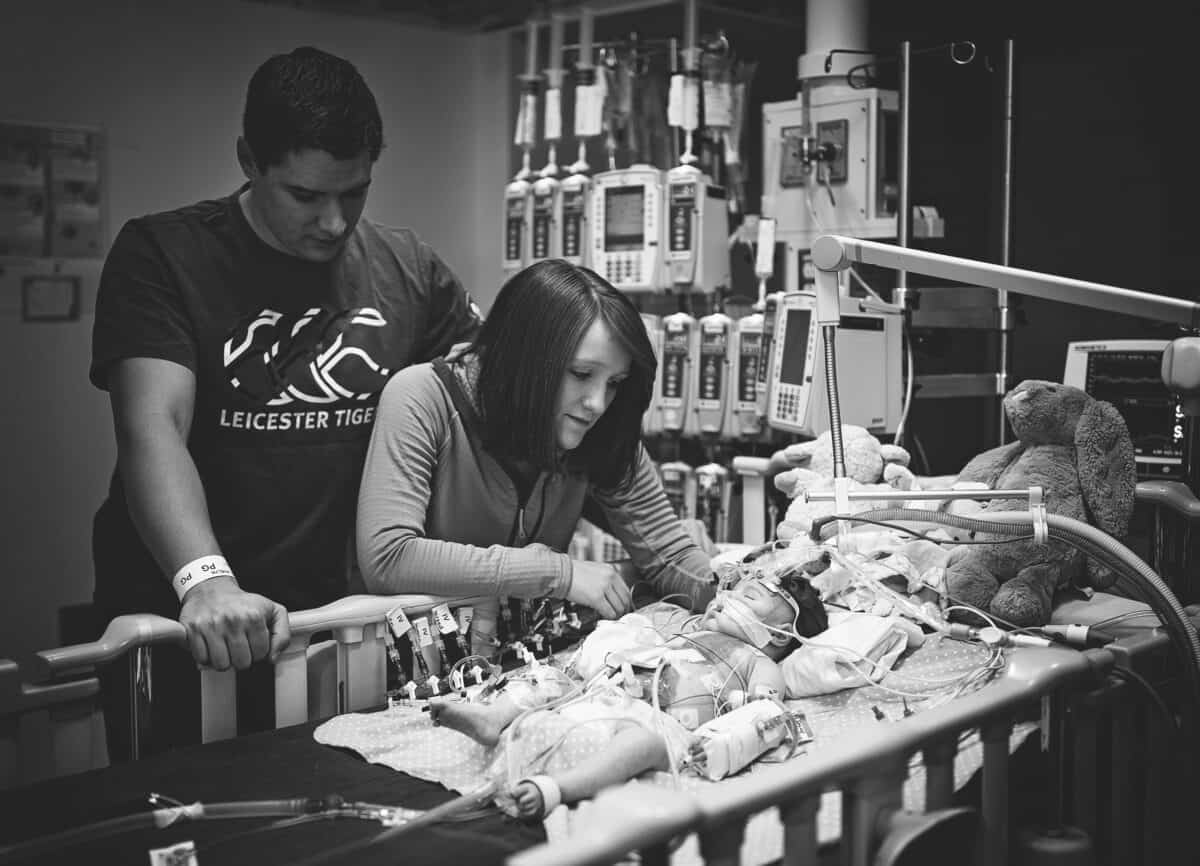
Children with critical CHDs are some of the sickest children you can imagine. Their care is incredibly complex and there’s not enough funding for research.
Avelyn’s battle
We stayed by her side day and night, not only to help keep her alive, but to provide every bit of normalcy possible throughout her hospitalization (450 consecutive days– most of which was spent within the pediatric cardiac ICU). When she woke or stirred, she knew her mama or dada would be there to soothe her. I still dream of those sweet chubby hands reaching for me in expectation. She loved, trusted, and interacted with those around her like any other infant. Avelyn made sure her dada & I knew she loved us (something we now cling to).
She was the absolute light of our lives.
Close to the end, she was doing better than she ever had and better than most of her providers ever expected. I cannot describe the feeling of finally bringing our daughter home after 17 months of living the unimaginable (4+ hours away). After so long, our own home felt foreign as feelings of joy and fear mingled indistinguishably. And yet we clung to our baby, rejoicing in her and all she had accomplished.
Sadly just weeks later, she suffered an extremely rare medication side effect. Things escalated quickly, and she had to be emergently transported back to the specialty hospital where she was born. She never saw life outside of hospital walls again.
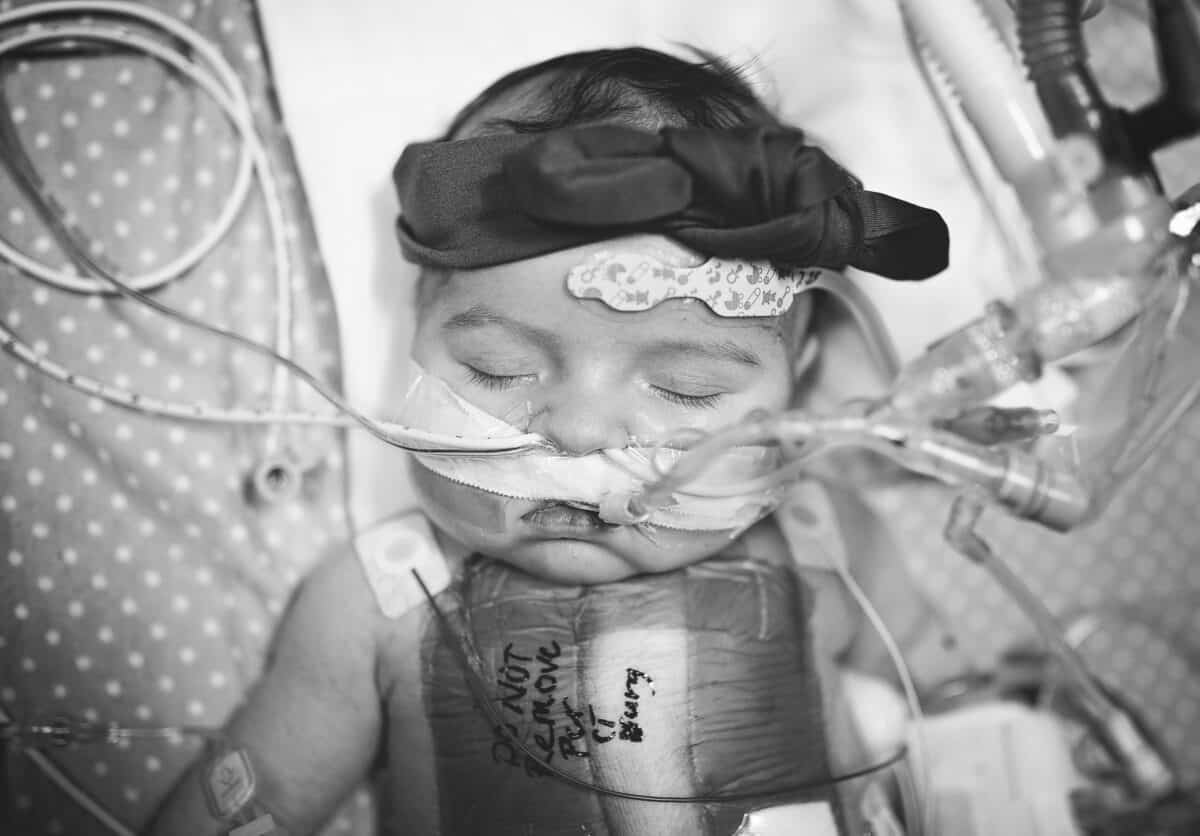
With more funding for research, more treatment options will become available.
Supporting heart organizations
We have chosen two heart foundations to support during our Hearts in the Wild project this year. Each of these foundations holds a special place in the heart and lives of the Creative Team members they’ve helped and supported. Here’s a little bit more about their mission and all the amazing things they’re doing for heart families and CHD research.
The Brett Boyer Foundation
The Brett Boyer Foundation’s mission is to raise awareness for CHDs and fund research to advance treatment options. They aim to spread the love and awareness that their darling Brett filled them with for the wonderful, capable people living with Down Syndrome.
Like most parents of children with CHD, Brett’s parents quickly found that people are in the dark about the existence of CHD, let alone the underfunding of necessary research. Without awareness and education, funding for research will never increase. They believe sharing stories and educating people about CHDs and how common they are in order to raise awareness. The Brett Boyer Foundation strives to support better options for treatment, improved lifestyles for people living with CHD, and positive outcomes for families.
The foundation has raised and donated millions of dollars of funding to cutting-edge CHD research, and they support a mental health research initiative that’s extremely near and dear to my heart. The foundation provided funds for the hiring of a full-time psychologist at Vanderbilt Children’s Hospital focused on supporting the psychosocial needs of CHD patients and families. The team is currently researching early mental health intervention for parents and patients and both the mental and physical outcomes of these interventions.
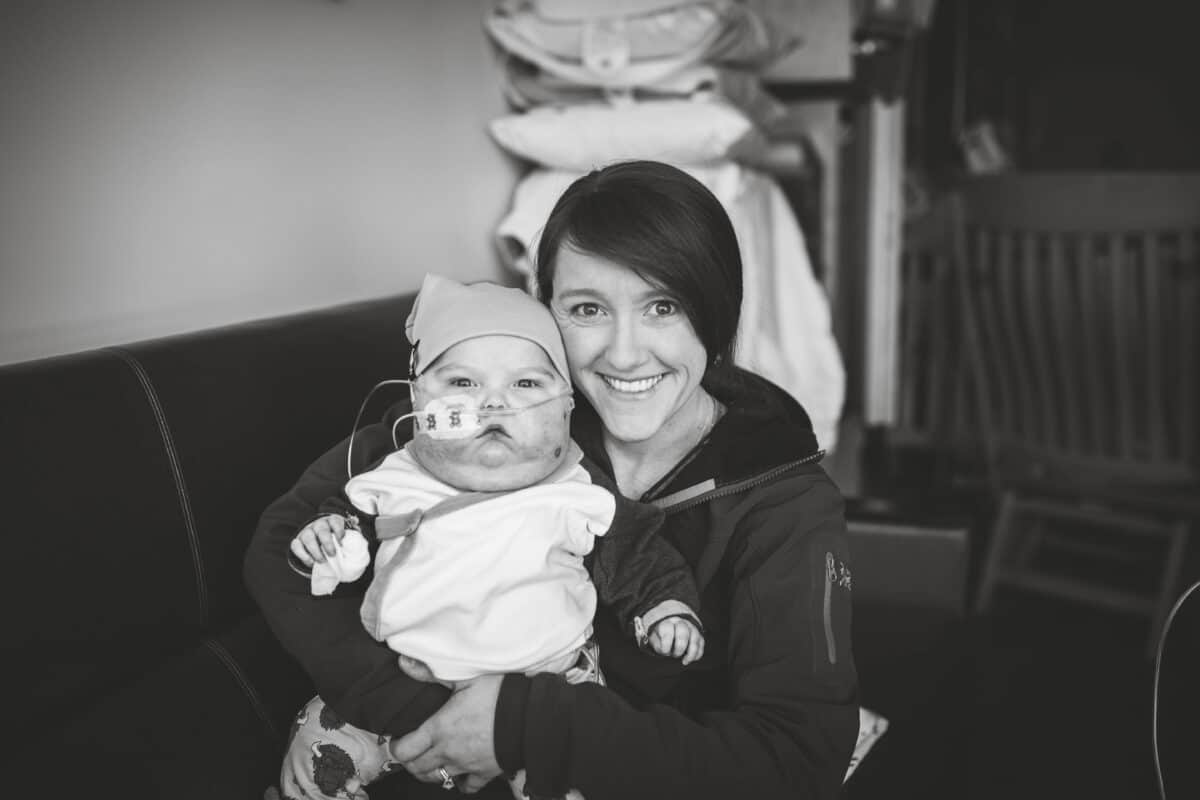
Children with critical CHDs have extremely complex needs that can oftentimes be overwhelming. To best care for their children, parents need to ensure their own mental wellness. Bright for Brett has been funding research that supports parents and children coping with the trauma of CHD.
The importance of supporting parental mental health
Sweet little Brett and my Avelyn were neighbors in the Pediatric Cardiac Intensive Care at Vanderbilt Children’s hospital for 100 days. But sadly, I didn’t reach out to Brett’s family during her life.
In Avelyn’s 450 days inpatient, we saw many families and children come and go. While most of the children did well, many did not. Honestly, by the time Brett came into the PCICU, I’d already isolated myself from other families. I just couldn’t take going to any more funerals for children while my own still sat in an ICU, barely clinging to life.
Instead, I hid within the glass walls of my child’s PICU room, trying to hold myself together. Each time a tiny body bag rolled by or a code blue was called, I’d find myself silently shedding tears for the child and family–while also knowing my child could be next. By the time Avelyn finally discharged after 16+ months, I’d long since exhibited tell-tale signs of post-traumatic stress disorder. But given Avelyn’s critically intensive needs, there wasn’t time to care for myself.
I can’t describe the gratitude I feel knowing there’s now a psychologist on staff who can help guide parents through the immense darkness that CHD can bring into a family’s life. I don’t believe it’s an exaggeration to believe that such care could save lives.
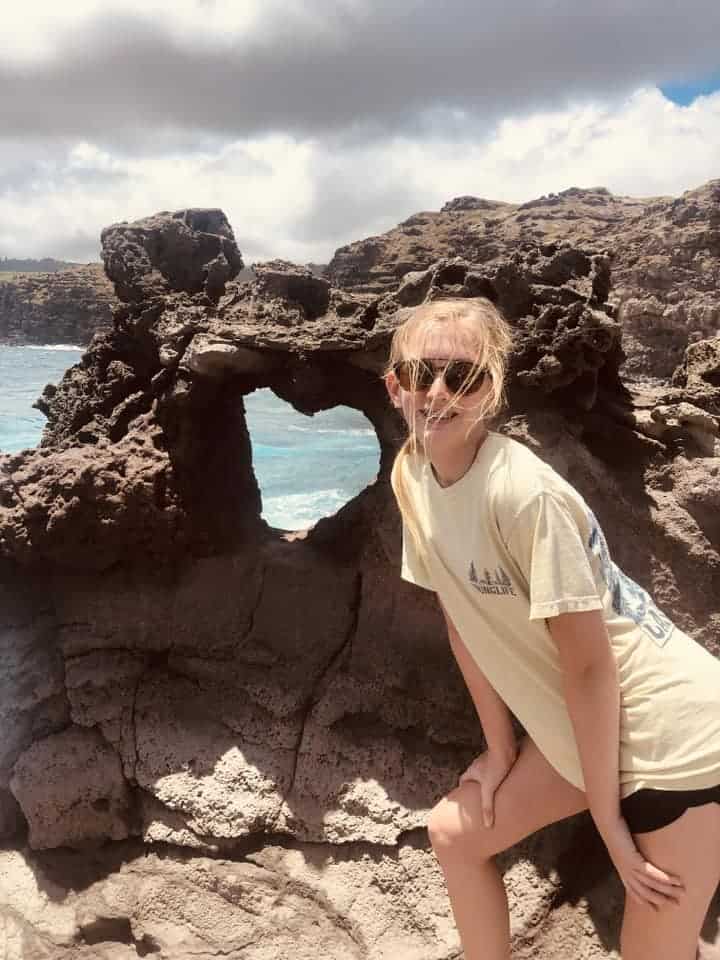
Mighty Oakes Heart Foundation
Through financial and emotional support that’s unique to the needs of each family, the MOHF helps them be a constant, mighty presence for their child, giving their little warrior every reason to keep fighting. Their vision is to be a source of strength, assurance, and hope to families of children with congenital heart defects. They are dedicated to expanding their reach, while continuing to support and connect with families on a personal level. Through critical financial support and emotional comfort, the MOFH enables families to focus on the love that empowers them to bravely face the fight.
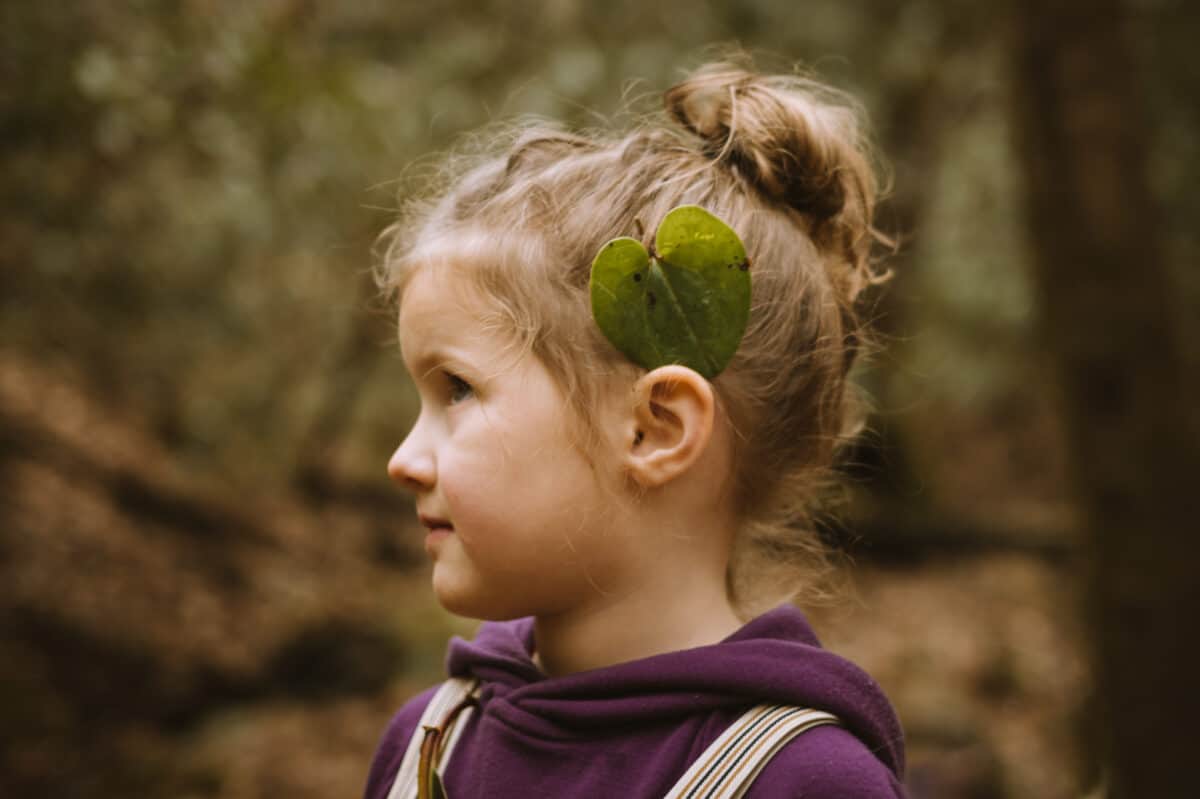
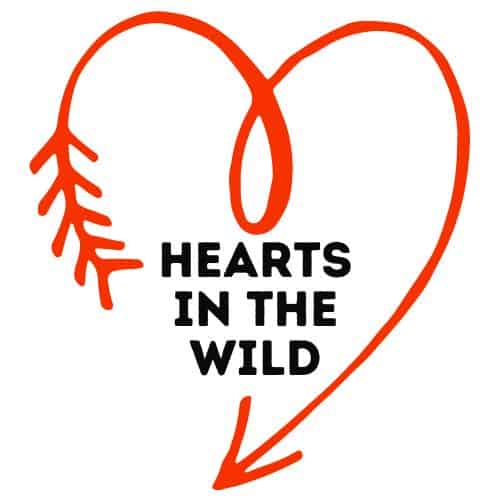
How to set up your own fundraiser on Instagram
If you’d like to help us raise funds for supporting heart families and CHD research, there’s a super easy way to do this right through the Instagram app.
Instagram app for Android
- Open Instagram and tap .
- Create or choose your image and tap .
- Crop and filter your post, and then tap .
- Tap Add fundraiser.
- Choose the nonprofit you want to fundraise for. You’ll automatically go to the “Fundraiser Details” page.
- Enter the details for your fundraiser and then tap Done.
- Tap .
Instagram app for iPhone
- Open Instagram and tap +
- Create or choose your image and tap Next.
- Crop and filter your post, and then tap Next.
- Tap Add fundraiser.
- Choose the nonprofit you want to fundraise for. You’ll automatically go to the “Fundraiser Details” page.
- Enter the details for your fundraiser and then tap Done.
- Tap Share.
After you’ve created your fundraiser, you can post it to other Instagram accounts or tag it in other Instagram posts. Donation and fundraising features on Instagram aren’t available in every area. Learn which countries can currently make donations or start fundraisers on Instagram.
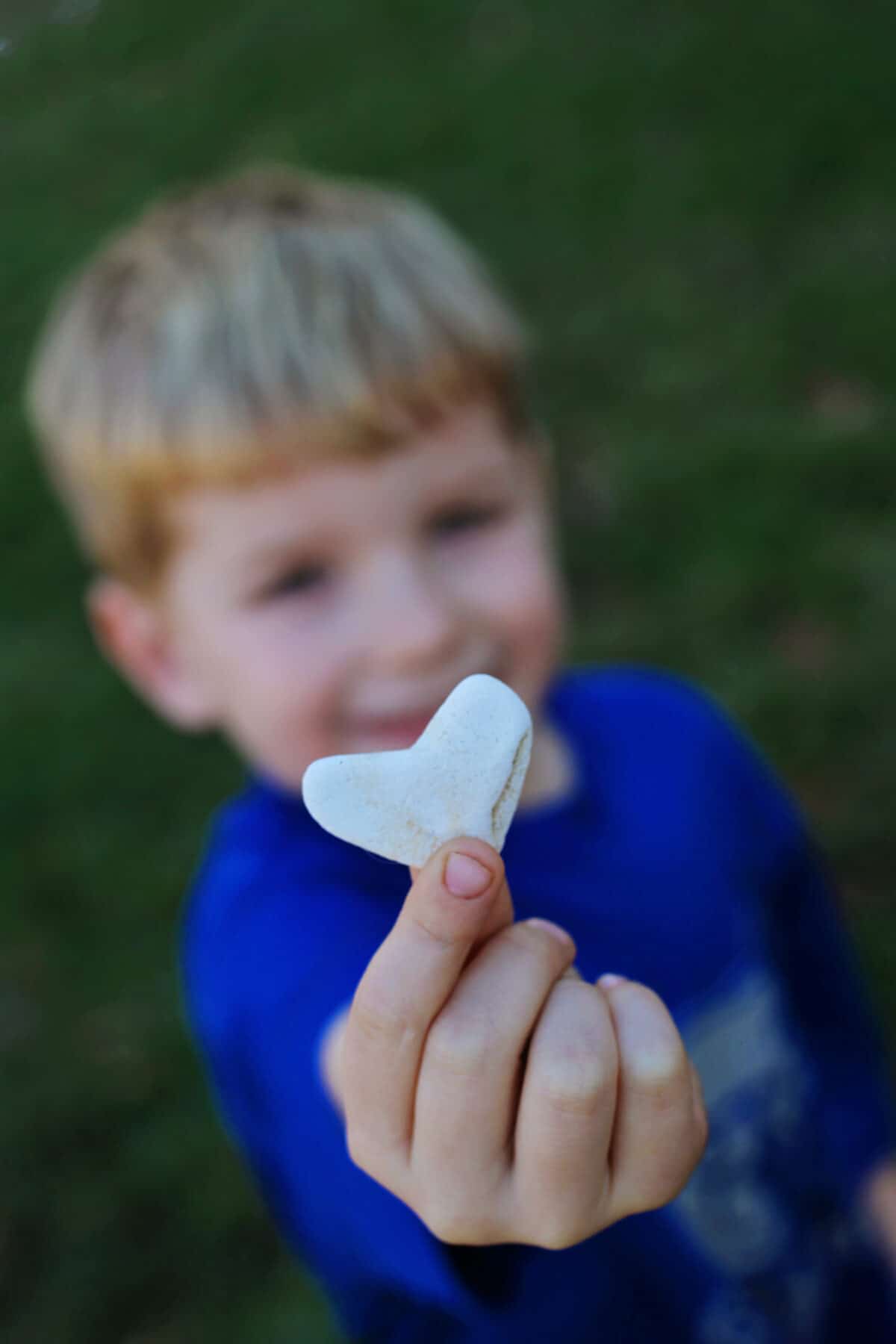
Join the Hearts in the Wild project
Raising awareness for congenital heart defects is a passion project for us here at RWMC, as multiple team member families have been affected. We hope you’ll join us in spreading awareness about CHDs and raising funds by finding Hearts in the Wild throughout the month of February!
Please consider donating to one of our chosen heart charties below (or feel free to choose your own). Any and all help raising funds and awareness for CHDs is greatly appreciated!
DONATE TO BRETT BOYER FOUNDATION
DONATE TO MIGHTY OAKES HEART FOUNDATION
About the author
Somer is a mama living in southern Appalachia. Somer’s motherhood journey began when her oldest daughter was born with severe congenital heart disease. Avelyn spent the majority of her 18 months of life within a pediatric ICU. Though she lived her life chronically critically ill, Avie was an incredibly loving and joyous child. After her death, Somer and her husband sought solace backpacking a section of the Appalachian Trail. Before long, they discovered their ability to cope seemed to correspond with time spent outdoors.
When it came time to add another kiddo to the mix, bringing the baby along was never a question. In an effort to celebrate the freedom provided by healthy bodies, Somer has hiked her second-born 2k+ miles. Even so, she doesn’t believe grand adventures are necessary to reap nature’s wonder. They just as often revel in mundane evenings in their backyard. The family believes it’s prioritizing time spent outdoors that’s important.
Professionally, Somer has spent the last decade caring for veterans in an acute psychiatric unit as a clinical nurse educator. Over the years, she’s become a passionate advocate for the intersectional relationships of mental health, wellness, and the natural world. She truly believes there’s healing and strength to be found outdoors for those who seek it.
You can find Somer online in the following locations:
Instagram: @somerpickel
RWMC posts: Somer Pickel
Podcast episode: Overcoming Grief Outdoors
References
Source link
